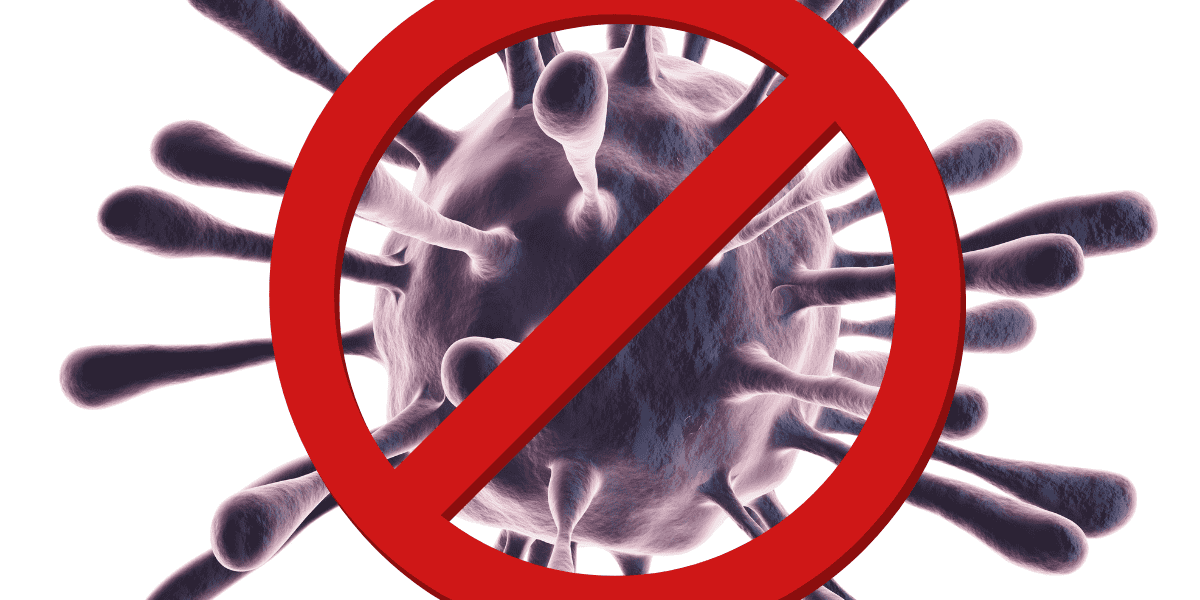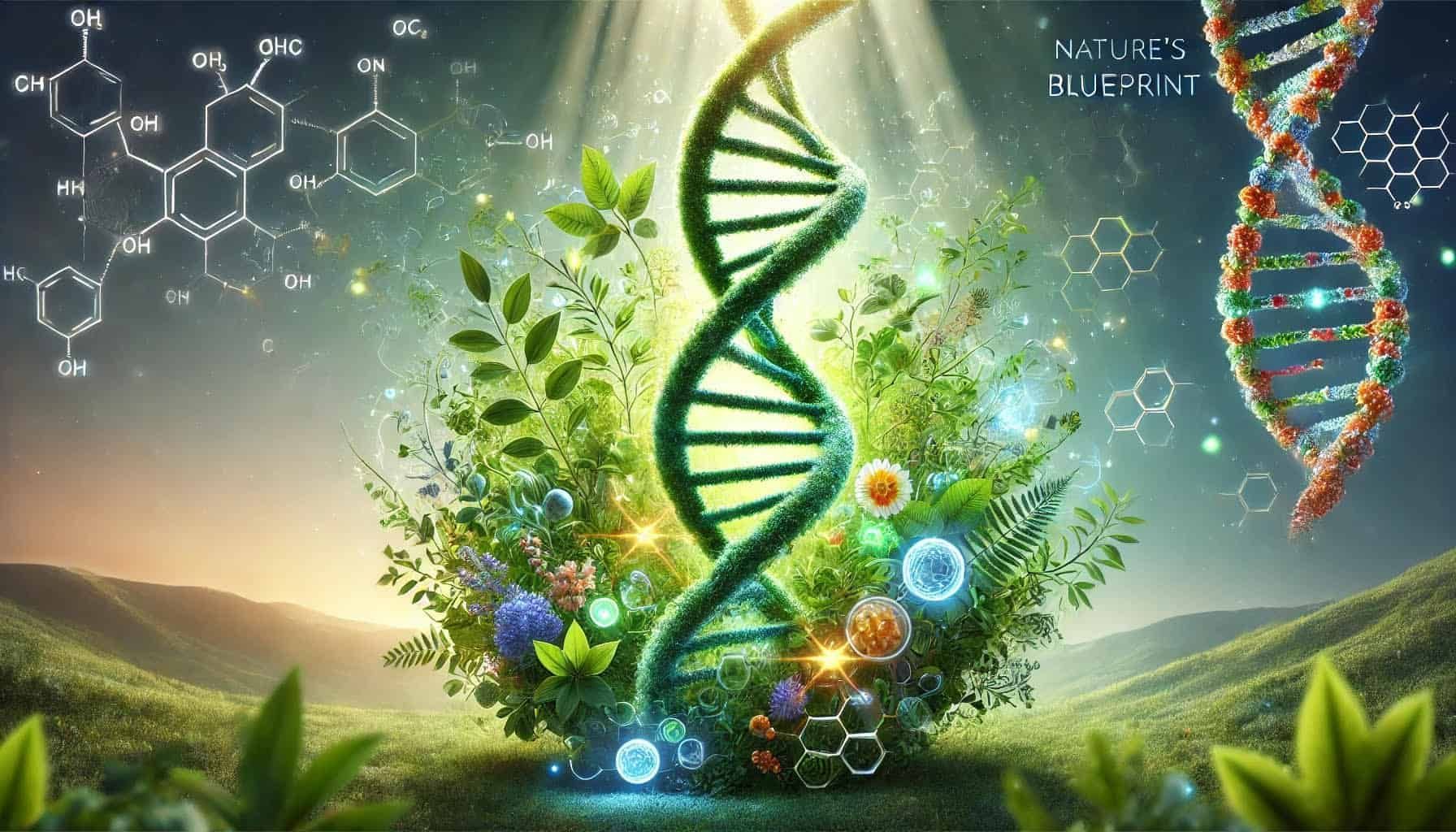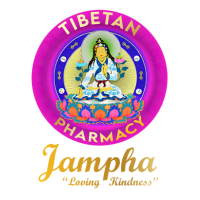Unlocking the Secrets of Cellular Communication: The Role of Body Receptors
Receptors The Silent Communicators | How Receptors Shape Our Health and Well-being
The human body maintains homeostasis, a state of stable internal conditions, through complex interactions involving numerous receptors scattered throughout the body. These receptors play a vital role in monitoring and responding to changes in the internal environment to ensure stability and optimal functioning. Receptors are the Silent Communicators that Shape Our Health and Well-being.
Here's an overview of how this intricate system works:
- Types of Receptors: The body contains various types of receptors, each specialized to detect specific changes or stimuli. These include thermoreceptors for temperature, chemoreceptors for chemical changes, mechanoreceptors for physical pressure or stretching, and nociceptors for pain.
- Sensing Changes: Receptors continuously monitor the internal and external environment. For example, chemoreceptors in blood vessels detect changes in blood pH or oxygen levels, while thermoreceptors in the skin sense external temperature changes.
- Signal Transmission: When a receptor detects a change, it generates a signal. This signal is usually in the form of nerve impulses or hormonal messages. For example, if the body temperature rises, thermoreceptors in the skin send signals to the brain.
- Central Processing: The brain and spinal cord, as central processing units, receive these signals. The brain interprets these signals and determines the necessary response. For instance, if the body is dehydrated, osmoreceptors in the hypothalamus detect increased blood osmolarity and signal the release of antidiuretic hormone (ADH).
- Response Activation: Based on the signals received, the body activates appropriate responses to restore balance. This could include physiological responses like sweating to cool the body or behavioral responses like seeking shade.
- Feedback Loops: These processes often involve feedback loops. In a negative feedback loop, the response reduces the effect of the initial stimulus, thus maintaining homeostasis. For example, if blood sugar levels rise, insulin is released to lower it, and once normal levels are achieved, insulin secretion decreases.
- Self-Healing Mechanisms: Many receptors are also involved in the body's self-healing processes. For instance, pain receptors alert the body to injury, initiating healing processes like inflammation to protect and repair the damaged tissue.
- Complex Interactions: These receptors do not work in isolation but interact in complex networks. For instance, the cardiovascular, respiratory, and nervous systems work together to regulate blood pressure and oxygen levels.
The body's receptors are essential in reading and responding to a myriad of complex interactions within the body. They are pivotal in maintaining homeostasis and initiating self-healing, ensuring the body operates efficiently and effectively in various conditions.
CB1 & CB2 CANNABINOID RECEPTORS
There continues to be growing interest in medicinal contributions of cannabinoids, most of the studies have been primarily from the cannabis plant, and their interaction with cannabinoid receptors (CB1R and CB2R) in the body. CB1R is mainly found in the central nervous system (CNS) and is linked to potential treatments for neuropsychological and neurodegenerative diseases. Cannabinoids also affect various peripheral sites and signal pathways.
Cannabis has been used medically for thousands of years. The discovery of its main psychoactive component, THC, led to identifying the CB1R and CB2R. These receptors are part of the G-protein coupled receptor family. CB1R is involved in various conditions, including cannabis dependence, and has different isoforms with distinct expression patterns in various tissues. CB2R, less similar to CB1R, has various isoforms expressed differently in tissues like the testis and spleen.
The endocannabinoid system includes endogenous agonists like AEA and 2-AG. They interact with CB1R and CB2R and other receptors, playing roles in synaptic transmission and pain regulation. Their synthesis, transport, and degradation pathways differ. 2-AG is a primary ligand for cannabinoid receptors in the CNS.
Endocannabinoid-mediated signaling involves retrograde signaling, where endocannabinoids produced in postsynaptic terminals influence presynaptic neurotransmitter release. This system is involved in both short-term and long-term synaptic depression and varies across different brain regions.
CB1R is widely expressed in the brain and other body parts, influencing various physiological processes. Its expression can increase in certain pathological conditions, affecting areas like the liver, heart, and gastrointestinal tract. The role of CB2R in the brain and its effects on neuronal activity remain less understood.
Cannabinoids, primarily derived from the Cannabis sativa plant, interact with cannabinoid receptors (CB1R and CB2R) in the human body. CB1R is predominantly found in the central nervous system and is linked to potential treatments for neuropsychological and neurodegenerative diseases. CB2R, though less understood, also plays a role in modulating neuronal activity. Cannabinoids have a significant impact on various physiological processes, including pain regulation, appetite control, and energy balance. They are involved in intricate signaling pathways in both the brain and peripheral tissues.
The psychoactive effects of cannabinoids, particularly THC, have historically limited their clinical use. However, the increasing understanding of the endocannabinoid system and its receptors has opened new avenues for therapeutic applications. The potential of cannabinoids to be used in combination with other plant medicines is particularly noteworthy.
When combined with other plant-derived compounds, cannabinoids can enhance therapeutic effects due to their synergistic interactions. This synergy could potentially increase the efficacy of treatments while reducing side effects. The presence of cannabinoid receptors throughout the body suggests that cannabinoids might enhance the body's response to other natural compounds, potentially leading to more effective treatments for a variety of conditions.
The growing acceptance and understanding of the endocannabinoid system may further promote the integration of cannabinoids with other plant-based therapies. This approach aligns with a holistic view of medicine, recognizing the potential benefits of combining various natural compounds to achieve improved health outcomes.
- Distribution of CB1R in the Brain and Body: CB1R is abundantly present in the brain, particularly in the olfactory bulb, hippocampus, basal ganglia, and cerebellum. It's also moderately expressed in other regions like the cerebral cortex and hypothalamus. Besides its presence in neurons, CB1R is found in astrocytes, oligodendrocytes, and microglia. Its role in mediating synaptic transmission is emphasized. Outside the brain, CB1R is also located in the peripheral nervous system and various peripheral tissues, where it plays roles in pain regulation, gastrointestinal mobility, appetite control, and energy balance. Intriguingly, its expression in the liver and cardiovascular system increases under pathological conditions, contributing to disease progression.
- Role of CB2R: The CB2R, though less understood compared to CB1R, has been identified in the brain and various other tissues. It is involved in reducing neuronal firing through mechanisms like opening Ca2+-activated chloride channels. This suggests its potential role in regulating neuronal activity.
- Implications and Challenges: The extensive distribution of cannabinoid receptors and their involvement in numerous physiological processes underscore the potential therapeutic benefits of cannabinoids. Research continues to explore how these compounds can be used therapeutically, harnessing their beneficial properties.
The presence of cannabinoid receptors extend throughout the body, these receptors, particularly CB1 and CB2, are found in various tissues extending from the hair follicles to the toes. This widespread distribution highlights the extensive potential of cannabinoids for therapeutic use across different bodily systems:
- Skin and Hair Follicles: Cannabinoid receptors are present in the skin, including in the hair follicles. They are involved in regulating skin physiology, including cell growth, hair growth, and skin inflammation. This suggests potential therapeutic applications for skin conditions like psoriasis, eczema, and acne.
- Central and Peripheral Nervous Systems: As mentioned earlier, CB1 receptors are abundant in the central nervous system, influencing neuropsychological processes. In the peripheral nervous system, these receptors are involved in pain sensation and modulation, making cannabinoids a potential treatment for chronic pain and neuropathy.
- Digestive System: In the gastrointestinal tract, cannabinoid receptors play a role in regulating appetite, digestion, and gut inflammation. This suggests potential benefits for conditions like inflammatory bowel disease and irritable bowel syndrome.
- Musculoskeletal System: Cannabinoid receptors in muscles and bones suggest potential roles in muscle relaxation, bone metabolism, and pain management, which could be beneficial for conditions like osteoporosis and arthritis.
- Cardiovascular System: The presence of cannabinoid receptors in the cardiovascular system indicates their role in regulating blood pressure and heart function. This could have implications for treating conditions like hypertension and atherosclerosis.
- Reproductive System: Cannabinoid receptors are found in various parts of the reproductive system, suggesting roles in fertility, sexual health, and possibly in the management of conditions like endometriosis.
- Immune System: CB2 receptors are particularly noted in the immune system, influencing immune responses and inflammation. This has implications for autoimmune diseases and inflammatory conditions.
- Endocrine System: These receptors also play a role in the endocrine system, affecting hormone production and regulation, which could be relevant for conditions like diabetes and thyroid disorders.
The presence of cannabinoid receptors in these diverse tissues underscores the potential for cannabinoids to be integrated with other plant-based therapies, leveraging their synergistic effects for a range of therapeutic applications. This approach could lead to more holistic and effective treatments for various health conditions, from skin disorders to chronic pain and beyond.
Besides Cannabinoid receptors the body has thousands of receptors that regulate homeostasis and that support the body in self healing.
Receptors in the human body have specific names, much like the cannabinoid receptors CB1 and CB2. These names often reflect the type of stimulus they respond to, the substance they bind to, or their location in the body. Here are some examples of well-known receptors and their functions:
- G-Protein-Coupled Receptors (GPCRs): This is a large family of receptors that respond to a variety of signals including hormones, neurotransmitters, and environmental stimuli. They play roles in numerous physiological processes. This large family includes numerous specific receptors, such as:
- Dopamine receptors (D1, D2, D3, D4, D5)
- Adrenergic receptors (α1, α2, β1, β2, β3)
- Histamine receptors (H1, H2, H3, H4)
- Olfactory receptors, which are responsible for the sense of smell, each detecting different odor molecules. - N-Methyl-D-Aspartate Receptor (NMDA Receptor): This receptor is a type of glutamate receptor important for controlling synaptic plasticity and memory function.
- Acetylcholine Receptors (Nicotinic and Muscarinic): These are receptors for the neurotransmitter acetylcholine. Nicotinic receptors are found in the nervous system and at the neuromuscular junction, while muscarinic receptors are located in various tissues including the heart, smooth muscles, and brain. Nicotinic acetylcholine receptors (nAChRs) are found in various subtypes like α7, α4β2. Muscarinic acetylcholine receptors (mAChRs) have five subtypes: M1, M2, M3, M4, and M5.
- Adrenergic Receptors (Alpha and Beta receptors): These receptors are targets for adrenaline (epinephrine) and noradrenaline (norepinephrine), playing key roles in the fight-or-flight response. They are divided into alpha and beta types, with further subtypes like Beta-1, Beta-2, etc.
- Insulin Receptor: A receptor that binds insulin, it plays a crucial role in the regulation of glucose metabolism.
- Serotonin Receptors (5-HT Receptors): These receptors bind serotonin and are involved in regulating mood, appetite, sleep, memory, and learning.
- Opioid Receptors (Mu, Delta, Kappa): These receptors bind opioids and are involved in pain relief, reward, and addictive behaviors.
Mu Opioid Receptors (MOR):
Location: Widely distributed in the brain, spinal cord, and digestive tract.
Function: MORs are primarily responsible for the analgesic (pain-relieving) effects of opioids. They also play a role in the reward system, contributing to the euphoria often associated with opioid use.
Ligands: MORs have high affinity for endogenous opioids like endorphins and exogenous opioids like morphine and heroin.
Clinical Significance: These receptors are the primary target of most opioid pain medications. However, stimulation of MORs can also lead to adverse effects like respiratory depression, constipation, and the development of tolerance and dependence.
Delta Opioid Receptors (DOR):
Location: Found in the brain and peripheral sensory neurons.
Function: DORs contribute to analgesic effects, particularly in chronic pain and neuropathic pain. They also play roles in mood regulation, emotional responses, and neuroprotective effects.
Ligands: These receptors bind endogenous opioids like enkephalins.
Clinical Significance: There's ongoing research into the development of DOR agonists for pain relief, with the hope of finding alternatives to MOR-targeted therapies, potentially with fewer side effects.
Kappa Opioid Receptors (KOR):
Location: Present in the brain, spinal cord, and peripheral tissues.
Function: KOR activation leads to analgesia but is also associated with dysphoria and hallucinations. It is involved in stress response, mood regulation, and control of the gastrointestinal system.
Ligands: They bind endogenous peptides like dynorphins.
Clinical Significance: Interest in KOR agonists and antagonists lies in their potential for treating addiction, depression, anxiety, and pain. KOR agonists can provide analgesia without the same level of addiction potential as MOR agonists, but their use is limited due to side effects like dysphoria.
8. Toll-like Receptors (TLRs): These are a class of proteins that play a key role in the immune system. They recognize pathogens and activate immune responses.
How Many Receptors Does the Body Have?
Given the complexity and diversity of these receptor families, it's challenging to state a precise total number. The figure would likely be in the thousands if you consider all the subtypes and variations within these main categories. The field of receptor biology is continually evolving, with new subtypes and functions being discovered regularly.
The exact number of different types of receptors in the human body is not precisely defined, mainly because the term "receptor" can refer to a wide range of structures and functions, and new receptors are continually being discovered and characterized. Here is an overview of the main categories and some examples:
- G-Protein-Coupled Receptors (GPCRs): This is the largest family of receptors in the human body. There are estimated to be over 800 GPCRs in humans, involved in detecting a vast array of stimuli including hormones, neurotransmitters, and environmental signals.
- Ion Channel-Linked Receptors: These receptors directly control the opening of ion channels and are crucial for rapid signaling in the nervous system. There are many types, including ligand-gated ion channels like NMDA, AMPA, and kainate receptors for glutamate, GABA receptors, and nicotinic acetylcholine receptors.
- Enzyme-Linked Receptors: These receptors have an extracellular ligand-binding domain and an intracellular domain that usually acts as an enzyme or is associated with an enzyme. Examples include receptor tyrosine kinases like the insulin receptor, growth factor receptors, and cytokine receptors.
- Intracellular Receptors: These receptors are located inside the cell and typically bind to lipophilic substances that can pass through the cell membrane, like steroid hormones. Examples include the glucocorticoid receptor and the estrogen receptor.
- Other Sensory Receptors: This includes a vast array of receptors in the sensory systems, such as photoreceptors in the eyes, mechanoreceptors in the skin and inner ear, and olfactory receptors.
- Immune System Receptors: These include a diverse range of receptors on immune cells, like Toll-like receptors, antigen receptors on B and T cells, and various cytokine receptors.
Given the complexity and diversity of these receptor families, it's challenging to state a precise total number. The figure would likely be in the thousands if you consider all the subtypes and variations within these main categories. The field of receptor biology is continually evolving, with new subtypes and functions being discovered regularly.
Each of these receptors is part of a complex signaling system that enables the body to respond to internal and external changes, helping maintain homeostasis and overall health. These receptors can be quite specific in their function and the substances they bind to, and their discovery and study have been crucial in the development of many medications and therapeutic treatments which Jampha Tibetan Pharmacy utilizes in the development of their medicinal Tinctured Infusion line of products.








Contact Us
Love a Jampha product? We would be honored if you could help others discover the benefits by leaving a quick review and sharing your experience!
Resources
Contact Us
Love a Jampha product? We would be honored if you could help others discover the benefits by leaving a quick review and sharing your experience!
Resources
A Higher Expression
Using select Botanicals, Cannabinoids and Live Terpenes, we have crafted High Vibrational "Synergy Enhanced Terpene Infusions" (SETI) that deliver a targeted and controlled entourage of restoration to imbalanced dis-eased systems. These same terpenes are what keeps our ecosystems in balance and protected from diseases and infections, allowing them to thrive and prosper. The same effects have been documented in human clinical trials and supported by science having miraculous and marvelous bioactive influences throughout each of the body systems.
The statements made regarding these products have not been evaluated by the Food and Drug Administration. The efficacy of these products has not been confirmed by FDA-approved research. These products are not intended to diagnose, treat, cure or prevent any disease. All information presented here is not meant to substitute for or alternative to information from health care practitioners. Please consult your health care professional about potential interactions or other possible complications before using any product.









